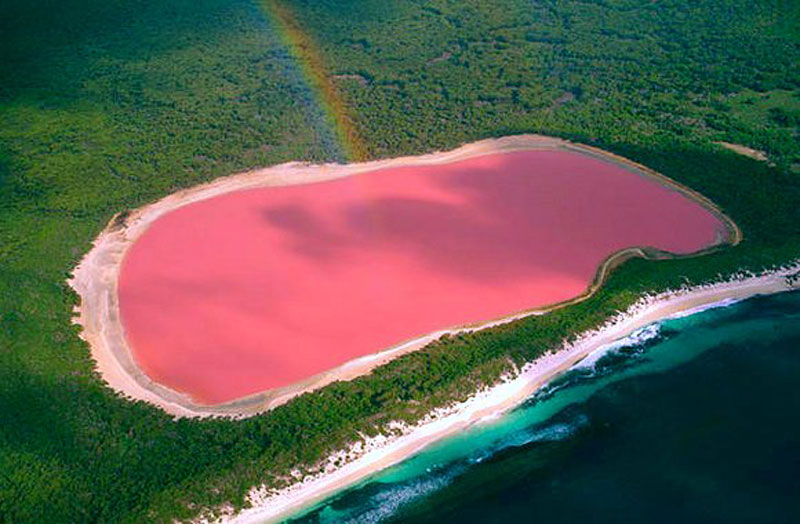Lake Hillier Facts
- This dazzling, not to mention distinctive, natural feature bears the simple name of Lake Hillier. The name’s the only simple thing about it, however. This marvel of natural processes holds a long history of astounding those who encounter it.
- For the moment, though, it’s unknown if the Indigenous Peoples of the surrounding region knew of its existence in the past. The outside world, however, first discovered the site on January 15, 1802. An expedition led by Matthew Finder first recorded it.
- His journal entries form the first known recorded sighting of the magnificently hued body of water. The same explorer visited the location again the next year. Subsequent to the death of a crewmember during their visit, he named the island in his honor.
- Due to governmental actions in 2012, the fabulous Lake Hillier now enjoys a degree of protection from the depredations of man. At that time, the local government formed the Recherche Archipelago Nature Reserve, in which this natural wonder lies.
- Its own remoteness and inaccessibility, though, forms its greatest protection. Swimming in the lake by visitors isn’t forbidden, and remains considered safe. Doing so, however, requires prior approval by the local Department of Environment Concern.
Related Articles
Lake Hillier Physical Description
The stunning Lake Hillier understandably impresses those who encounter it. Yet the location does so for a variety of reasons, not just its mind-blowing color. Nevertheless, that characteristic remains the most notable of its many wondrous physical attributes.
That’s because, as immediately becomes apparent to those who visit the site, it presents a stunning pink hue to the world. Amazingly, due to the nature of the water itself, the brilliant shade of its water remains apparent even when removed from the lake.
It’s also of a respectable size in terms of physical dimensions. It measures approximately 2,000 ft (609.6 m) in overall length. The site also measures roughly 820 ft (249.9 m) in width. That varies, though, due to irregularities in its shape, and evaporation.
Due to the nature of the location of the marvelous Lake Hillier, it also sits at an extremely low altitude above sea level. This further varies across its length, due to the nature of the surrounding terrain. Its altitude varies from as little as 23 ft (7 m) to 568 ft (173 m).
The overall surface areas of the lake understandably varies, though, This occurs mainly due to fluctuations in the rainfall and evaporation cycle. Generally, however, this remarkable work of natural forces boasts a surface area equalling roughly 37 acres (15 ha).
Lake Hillier Location, Features, and Ecology
The mesmerizing beauty of Lake Hillier perhaps comes as a slightly lesser surprise when one learns what region of the world it resides in. That’s due to the fact that it formed in an area that constitutes one of the nine regions of the western portion of Australia.
Its precise location, however, may still surprise some of our readers. That’s because it actually formed on a moderately small island! More specifically, it lies on the appropriately-named Middle Island. This itself forms part of the beautiful Recherche Archipelago.
The incredible body of water itself appears very close to the northern shore of the island. It’s further bordered by a narrow strip of sand, and otherwise surrounded by a dense region of forest. A thin strip of plant-covered sand dunes separates it from the sea.
Perhaps not completely surprisingly, only one form of life inhabits Lake Hillier, though. That’s composed of a single form of red algae. The presence of that microorganism, combined with an extremely high salt content in the water creates a brilliant organic dye.
Yet another naturally occurring source further augments this process, as well. The extreme salinity causes a buildup of salt deposits along the shoreline. A red halophilic bacteria inhabits these deposits, and this leaks into the water when rain washes it down.
Features Sharing Its Region
Check out our other articles on 5 Amazing Andean Species, Platypus, Lake Superior, Gray’s Leaf Insect, Inaccessible Island Rail, Horn Shark, Saltwater Crocodile, Purple Frog, Green Iguana

